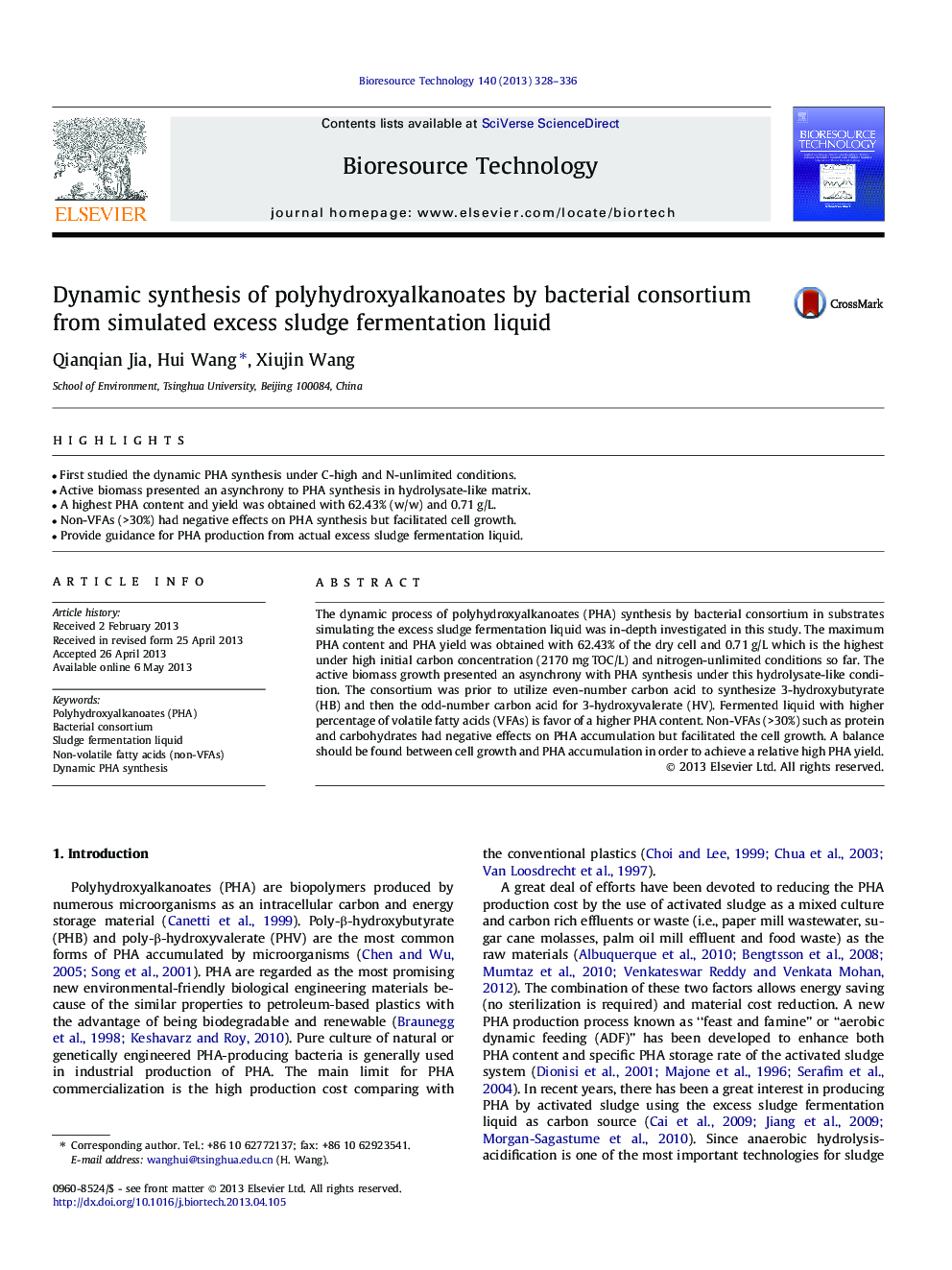| Article ID | Journal | Published Year | Pages | File Type |
|---|---|---|---|---|
| 7082184 | Bioresource Technology | 2013 | 9 Pages |
Abstract
The dynamic process of polyhydroxyalkanoates (PHA) synthesis by bacterial consortium in substrates simulating the excess sludge fermentation liquid was in-depth investigated in this study. The maximum PHA content and PHA yield was obtained with 62.43% of the dry cell and 0.71 g/L which is the highest under high initial carbon concentration (2170 mg TOC/L) and nitrogen-unlimited conditions so far. The active biomass growth presented an asynchrony with PHA synthesis under this hydrolysate-like condition. The consortium was prior to utilize even-number carbon acid to synthesize 3-hydroxybutyrate (HB) and then the odd-number carbon acid for 3-hydroxyvalerate (HV). Fermented liquid with higher percentage of volatile fatty acids (VFAs) is favor of a higher PHA content. Non-VFAs (>30%) such as protein and carbohydrates had negative effects on PHA accumulation but facilitated the cell growth. A balance should be found between cell growth and PHA accumulation in order to achieve a relative high PHA yield.
Related Topics
Physical Sciences and Engineering
Chemical Engineering
Process Chemistry and Technology
Authors
Qianqian Jia, Hui Wang, Xiujin Wang,
